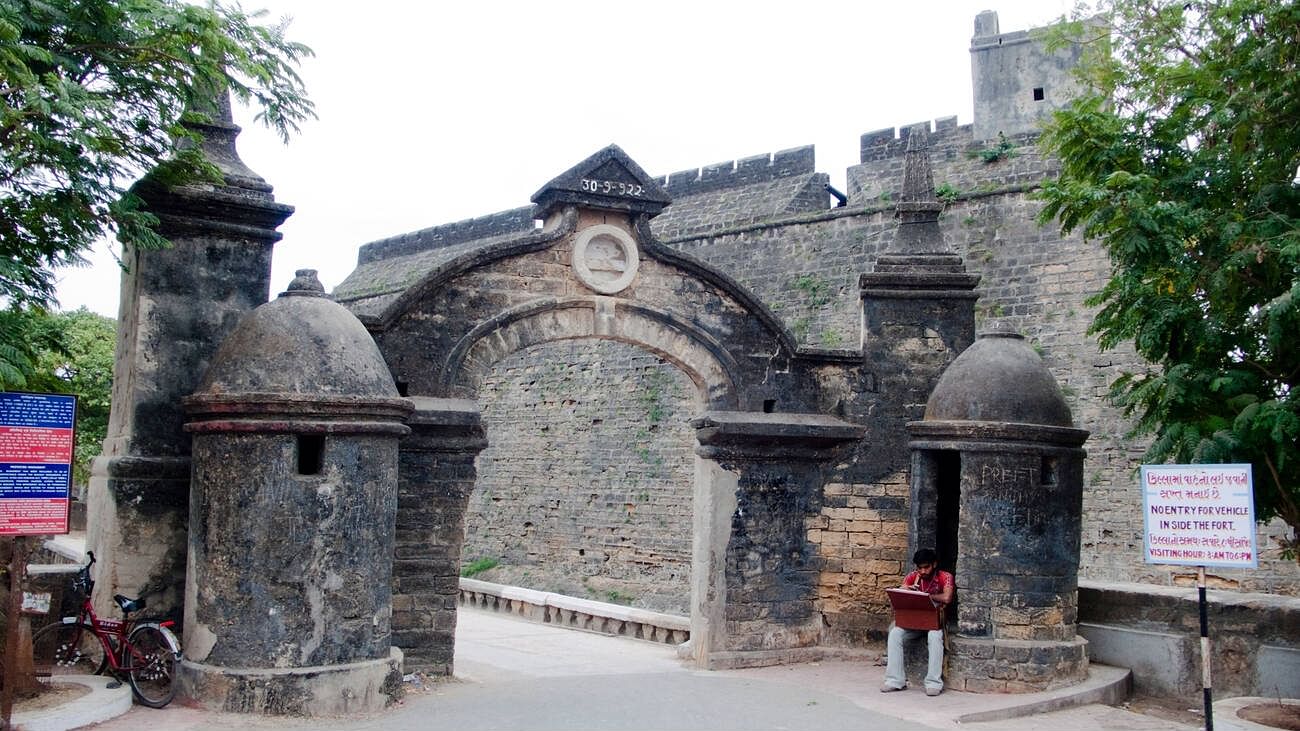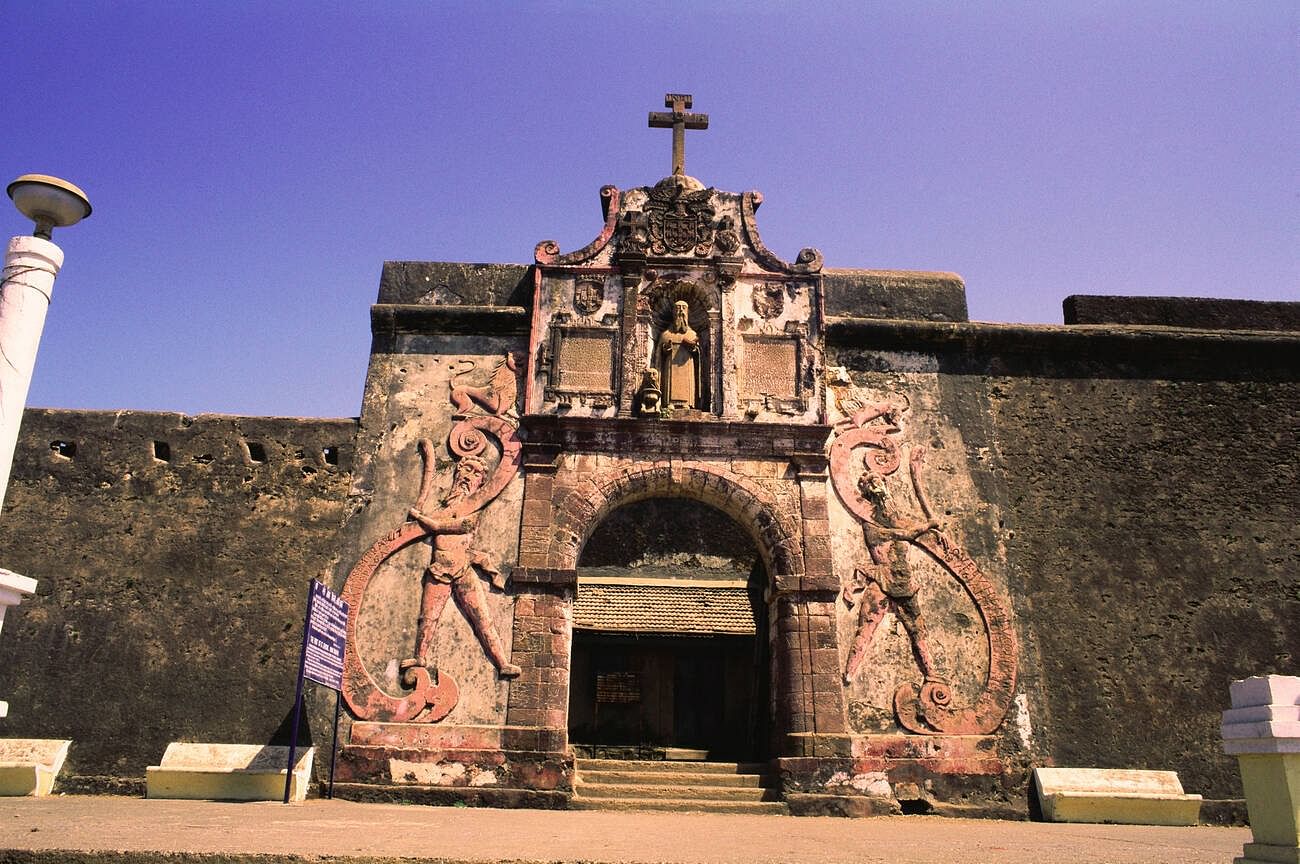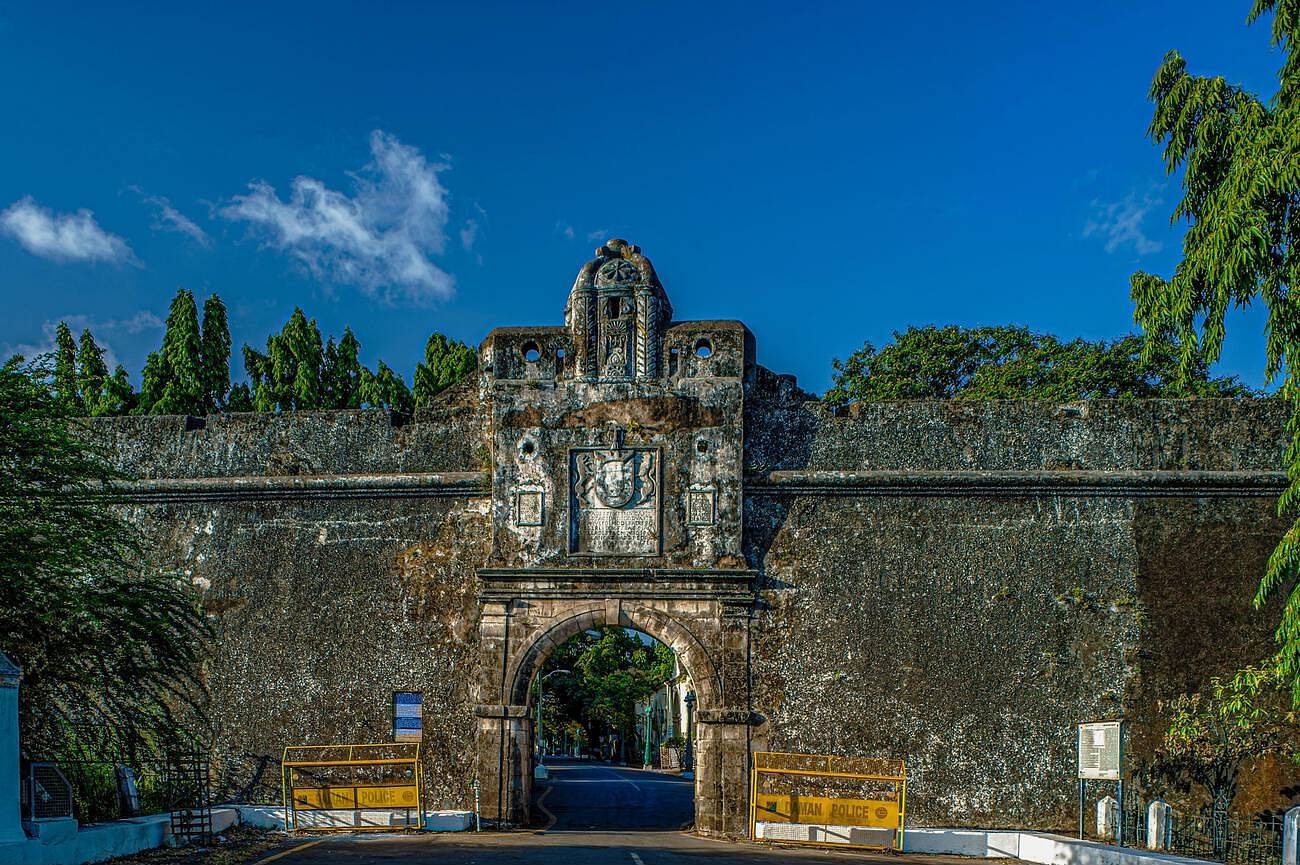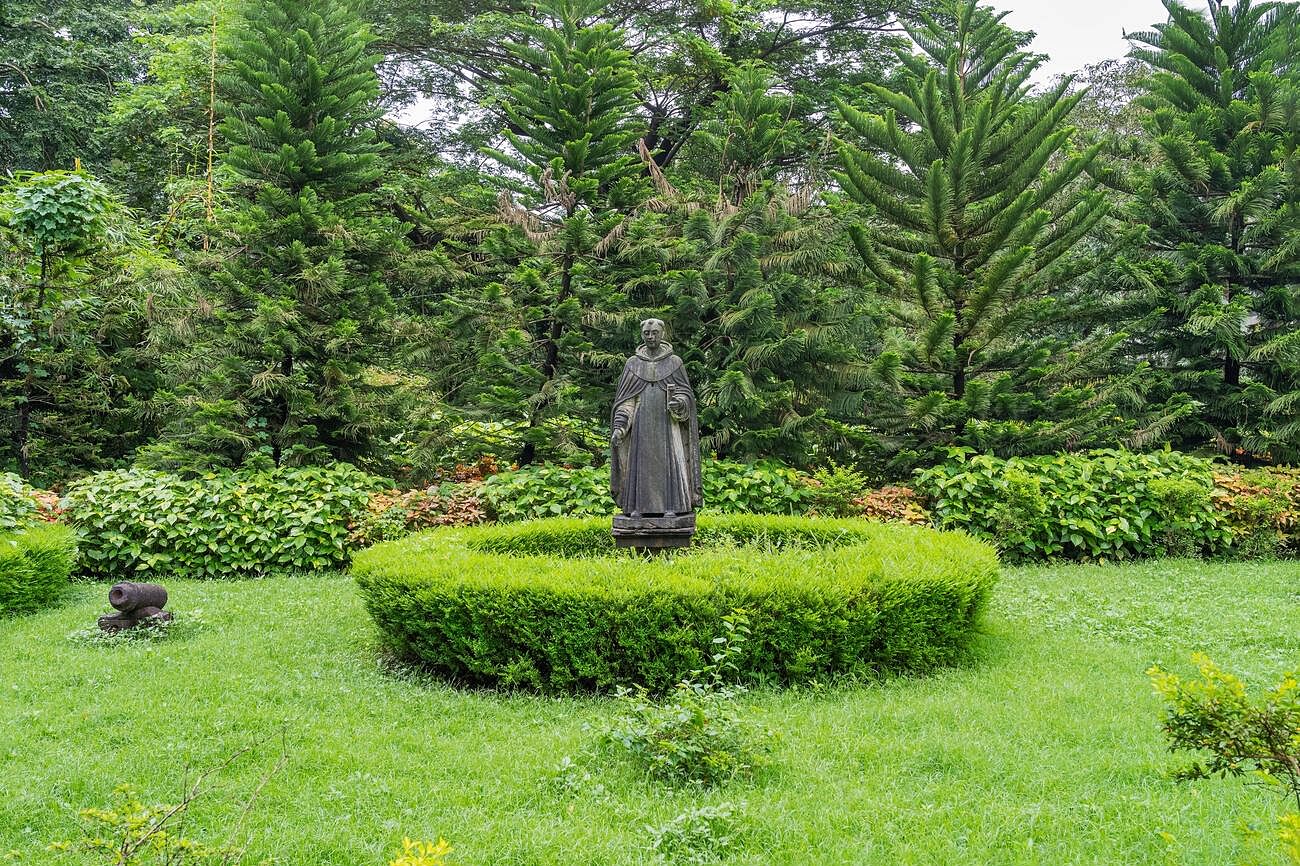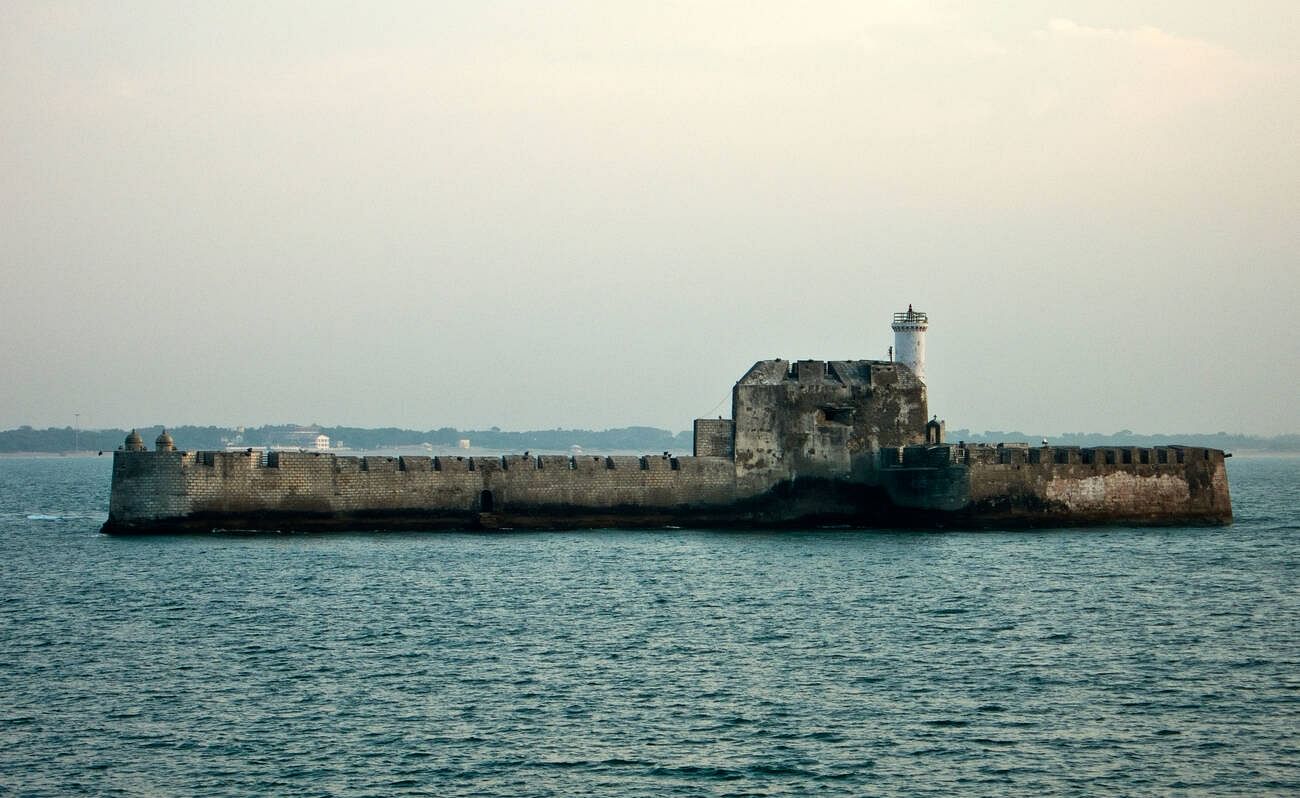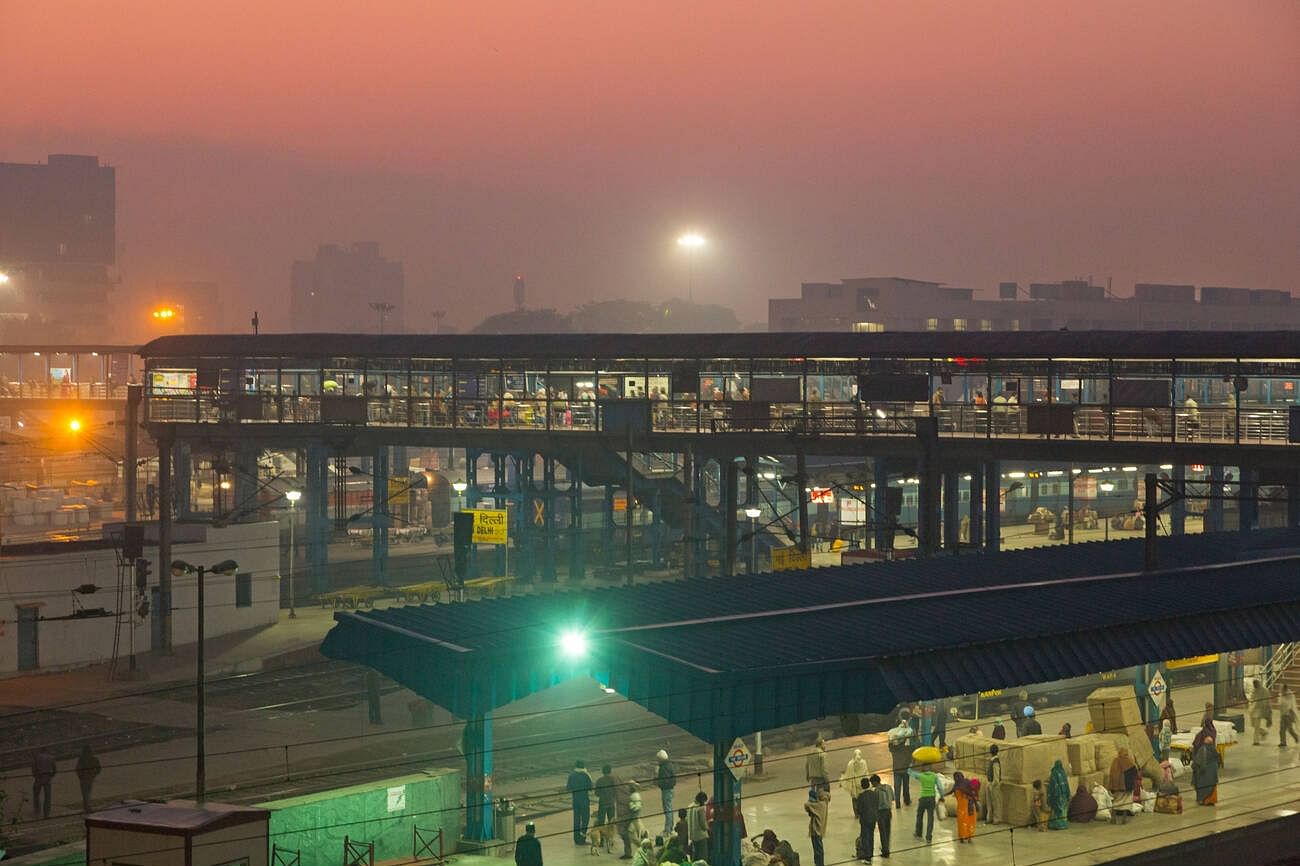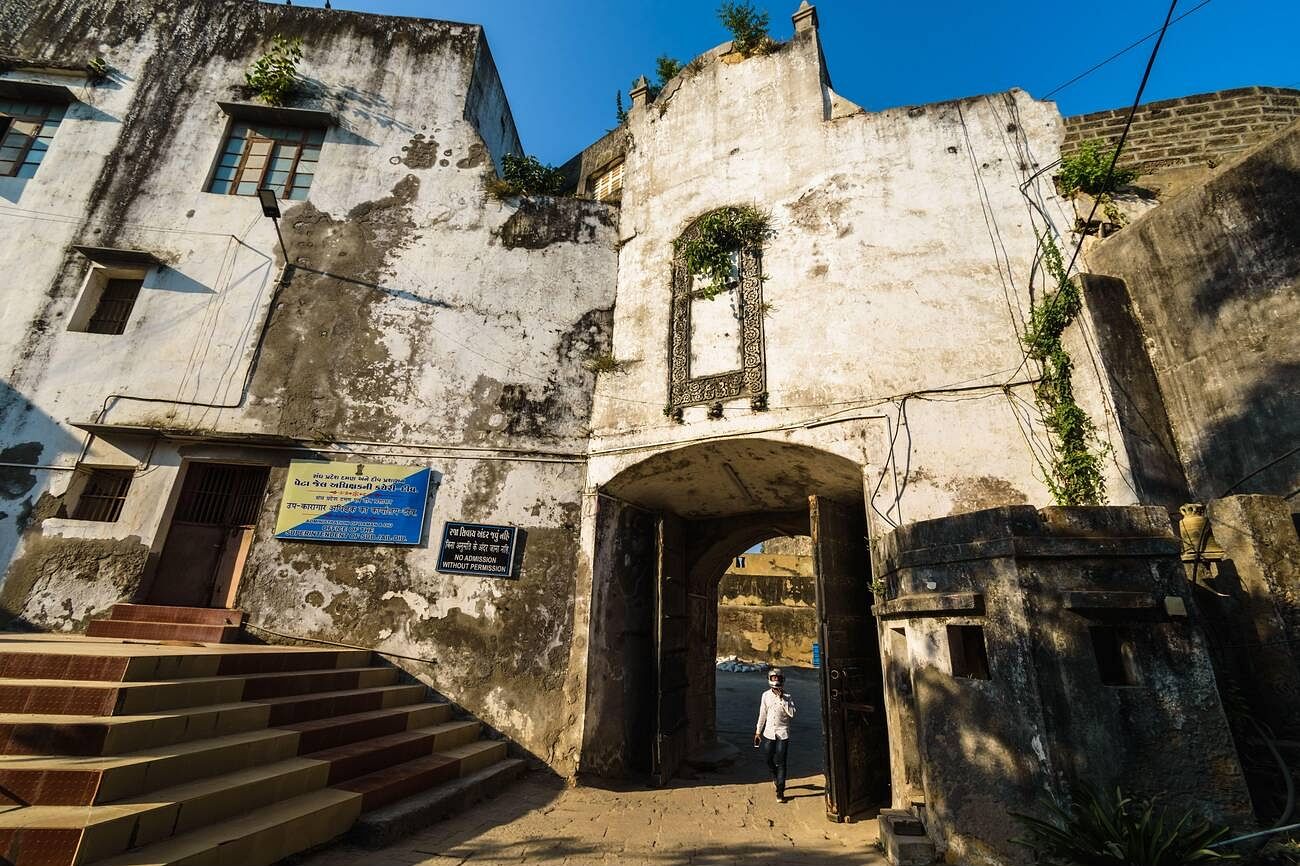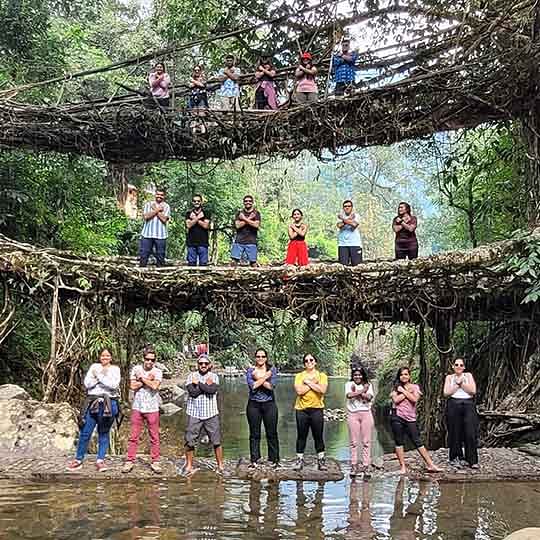Embarking on a journey to explore the historical monuments and places in Daman and Diu is akin to stepping into a time capsule, where the past comes alive before our eyes. These historical sites stand as silent witnesses to the passage of time, each stone and structure weaving tales of bygone eras and past cultures.From majestic forts to ornate churches, from sacred temples to ancient towers, each holds a piece of history waiting to be discovered. So as you book your India trips and land on Daman and Diu, join us on a captivating voyage as we delve into the rich tapestry of Daman’s heritage, uncovering the secrets and stories that have shaped the cultural landscape of this amazing place.
Renowned for its picturesque landscapes, Daman is famous for its historic forts and monuments. These landmarks offer a glimpse into Daman’s illustrious history and reflect the Portuguese influence in the region. Celebrated for their impeccable beauty and historical significance, these monuments stand as testaments to the past. Strolling through these forts and monuments feels like a journey through centuries of history, showcasing the rich tapestry of Indian heritage intertwined with Portuguese legacy.
So without further ado, let us check out our curated list of Historical Places in Daman and Diu.
Nani Daman FortThe grand Nani Daman Fort in Nani Daman is considered one of the most famous historical places in Daman, spans approximately 12,250 square meters, and features three citadels and two gateways. Constructed by the Portuguese beginning in 1614 AD and completed in 1672 AD, it is named after St. Jerome, a prominent father of the Catholic Church.
A notable feature of the fort is the large gateway facing the sea, adorned with a statue of St. Jerome and two human figures on either side. Among the significant structures within the fort is the Church of Our Lady of the Sea.
Also known as St. Jerome Fort in Daman and Diu, the fort walls are embellished with beautiful inscriptions and carvings. From the fort, visitors can enjoy panoramic views of the Arabian Sea, Moti Daman Fort, and the fishing trawlers on the sparkling waters of the Daman Ganga River.
The fort also includes a cemetery and an open ground. Stone steps around the fort lead to the top, where a pathway offers a stunning view of the sunset. Exploring the entire fort takes about an hour. This fort is an excellent example of Portuguese architecture and is one of the best places to visit in Daman and Diu.
Moti Daman FortAnother one of the two famous Forts in Daman and Diu is the Moti Daman Fort. Spanning approximately 30,000 square meters, this fortress is said to have been built in 1559 AD following the Portuguese takeover of the Muslim bastion that previously occupied the site. Comprising ten citadels and two gateways – the Southern Land Gate and the Northern Sea Gate adorned with numerous inscriptions – the fort boasts a polygonal shape, fortified by a deep trench to repel enemy forces.
Towering projections, about 500 feet high, punctuate its structure at regular intervals. A staircase connects the terrace to the inner ground surface, where barracks for defense personnel line the inner wall. On the northern side, one can observe the Secretariat, palaces, and other significant administrative buildings.
Legend suggests that Portuguese nobility, accompanied by their families, once inhabited the fort. Today, visitors from near and far flock to behold this majestic relic of Daman’s Portuguese past.
This fortress is meticulously preserved, featuring well-planned roads, miniature gardens, cozy cafes, and verdant surroundings. Recently, a circular road was constructed, encircling the fort like a necklace. Within the fort, visitors can explore attractions such as the Cathedral of Bom Jesus, the Chapel of Our Lady of Rosary, and the Dominican Monastery, each offering a glimpse into the area’s rich history.
A new addition to the site is the Hilsa Aquarium, showcasing a variety of fish species and offering submarine boat rides, which have become a major draw for tourists. Transportation options such as buses, taxis, and auto-rickshaws from the main city make visiting the Moti Daman Fort easily accessible.
This fortress exudes a historic charm and stands as a prominent tourist destination in Daman and Diu. Drawing thousands of visitors annually, it offers a fascinating glimpse into the region’s diverse history. The precincts of Moti Daman Fort are meticulously maintained by the administrative authorities of Daman and Diu, while its lush green surroundings contribute to a tranquil atmosphere.
Pergola Garden – Situated within the Moti Daman Fort, the Pergola Garden was constructed to honor the Portuguese soldiers who perished during the liberation of Dadra and Nagar Haveli.
The garden, which bears a resemblance to the Pantheon in Athens, features the ‘House of Bocage’ on the left side of its entrance. This small, locked house is the former residence of the 18th-century Portuguese poet Bocage and is marked by a marble tombstone above the door, indicating that the poet once lived there.
Dominican MonasteryThe Dominican Monastery, located within the fort of Moti Daman, is often referred to as the Ruined Church. Many travelers visit this archaeological site drawn by its intriguing appearance, though most are unaware of its Portuguese colonial history. Once considered the most prestigious church in the area, the monastery was built in 1567 in honor of Saint Dominic. It served as a place of worship for Christians and a center for theological education for scholars from around the world. The church’s destruction is attributed to an earthquake.
The church was constructed using classic Portuguese architectural techniques, which are evident in other ancient churches in the region. Visitors can still see the monastery’s arches and walls that survived the earthquake. The Catholic community celebrates two major events at the monastery each year. On February 2nd, the community gathers to hear the clergy narrate the monastery’s history.
On the third Sunday of December, a holy mass is conducted to honor Saint Dominic and remember those who perished in the earthquake. The Dominican Monastery (The Ruined Church) is typically open for visitors until sundown.
Daman Light House
The Light House stands as an iconic symbol of Daman, comprising two distinct structures: the Old Light House and the New Light House, both nestled within the Moti Daman Fort, near the tranquil Daman Ganga River.
Legend has it that the Portuguese erected the Old Light House, while the Indian Government later constructed the New Light House adjacent to it. The latter features a revolving tower crowned with a lantern house, though it remains off-limits to civilians due to security measures.
Conversely, the Old Light House serves as a prominent tourist attraction, painted in pristine white and adorned with various inscriptions. Rising just a single storey, it boasts a spiral staircase offering access to captivating views of the glistening sea from its summit.
A visit to these historical monuments promises an enchanting escape. These majestic edifices epitomize architectural brilliance and provide invaluable insights into India’s illustrious past, offering a glimpse into the era of colonial rule.
Zampa Gateway
The Zampa Gateway serves as the principal entrance to the city wall of Diu, positioned to the west of the town and adjacent to the Fort to the east. This striking red monument stands as a significant landmark in Diu, believed to have been erected during the medieval era. Its captivating aesthetic reflects the architectural prowess of artisans from that period, featuring intricate carvings of angels, lions, and a priest. Additionally, it houses a chapel adorned with inscriptions dating back to 1702.
The architectural splendor of the Zampa Gateway captivates visitors, leaving them mesmerized and enraptured. Adjacent to this historic structure lies the Zampa Waterfall, an artificially created feature that further enhances its visual appeal. With profound historical significance, the gateway holds a prominent position among the key tourist attractions in the region.
Fortim Do MarDiu Fortim-do-Mar is one of the most dazzling and unique sites to visit in Diu. This renowned monument features an impressive stone structure, situated right at the entrance of the creek. It boasts a beautiful lighthouse and a small chapel dedicated to Our Lady of the Sea. Located nearly a nautical mile from the Diu jetty, it is accessible by canoe or motor launch. The fort, also known as Panikotha or Fortim-do-Mar, offers stunning views whether seen from the village of Ghoghla, the marina, the Diu Fort, or from within Diu itself. Nestled in the heart of the ocean, this monument is a magnificent sight to behold.
Diu offers a variety of tourist attractions, including revered holy places, beautifully landscaped gardens, rich museums, and impressive forts and monuments. A great way to begin exploring Diu is by visiting its spectacular forts and monuments, each with its unique charm. Among these, Fortim-do-Mar stands out as a particularly remarkable fortress and monument.
Tower of Silence
Diu Fort and the Tower of Silence in Diu, India, stand as remarkable testaments to the region’s history and some of the inspiring historical sites in Daman and Diu. The Diu Fort, a 16th-century structure built by the Portuguese, is situated on the Arabian Sea coast. The Tower of Silence, constructed by Zoroastrians in the 17th century, is perched on a hill overlooking Diu.
This complex is renowned for its impressive walls, bastions, and a museum that highlights the area’s rich religious and cultural heritage. Visitors can enjoy guided tours of the fort, exploring its various attractions, including a pathway leading to a labyrinth of gun batteries, cannons, and breathtaking views of the expansive sea. The numerous beaches nearby are popular for swimming, sunbathing, and exploring coral reefs. Bringing a camera would be beneficial to capture the stunning views of the Arabian Sea and the surrounding landscapes.
Saint Paul’s Church
One of the religious historical sites in Daman and Diu is Saint Paul’s church. St. Paul Church, also known as the Church of Immaculate Conception, holds significant historical and religious importance. This splendid Gothic architectural marvel was constructed by the Portuguese, with its foundation stone laid on April 7, 1601, during the tenure of Governor Duarte de Melo and Parish Priest Rev. Fr. Manuel Fernandes.
The layout of this impressive monument was designed by Jesuit Priest Rev. Fr. Gaspar Soares. Completed and consecrated in 1610, the church is dedicated to Our Lady of Immaculate Conception.
Originally built as a seminary for the Jesuits, it was also referred to as the Convent of St. Paul, with the cloister serving as the seminary. It is believed that seminarians were trained to work in Akbar’s court, which included Arabic in the curriculum. As a heritage building, it has much to commend it.
The elaborate front façade immediately catches the eye, while the interior walls are adorned with shell-like motifs, possibly reflecting the surrounding environment and the abundance of shells on Diu’s shores. The high vaulted stone dome is astonishing and elicits admiration. The church’s treasures include three altars and a pulpit, all intricately crafted from black wood with remarkable precision and artistry.
How to reach Daman and Diu for a visit to these historical sites
By Air: The Daman airport, positioned approximately 3 kilometers from the center of Daman, primarily serves as a military airbase rather than a typical commercial airport. Nevertheless, it facilitates daily flights to and from Mumbai and Baroda. Mumbai’s Chhatrapati Shivaji International Airport, situated at a distance of 170-190 kilometers, serves as a major hub for air travel. Leading airlines such as Jet Airways, Air Deccan, Spice Jet, and Kingfisher Airlines operate regular flights to and from Mumbai.Alternatively, tourists can also opt for flights to Diu from Porbandar and Mumbai. Another viable option to reach Daman and Diu is by flying to Bhavnagar or Porbandar and then continuing the journey via road using buses, cars, or taxis to reach the final destination.
By Train: The closest railway station to Daman is situated in Vapi, approximately 12 km away. Additionally, Ahmedabad and Mumbai serve as two prominent railway stations of the Western Railways close to Daman.
Daman enjoys excellent connectivity with major cities across the country, including Mumbai, Delhi, Dehradun, Jaipur, Bangalore, Hyderabad, Ahmedabad, Amritsar, Ernakulam, Jammu, and Kalka. Various types of trains, including superfast, passenger, and express services, operate through these railway stations, providing convenient access to Daman.
By Road: Numerous state-run and privately operated buses provide transportation from Daman to the nearby city of Surat, located approximately 110 km away. Travelers can also conveniently journey from Mumbai to Daman, covering a distance of 180 km, by bus.
A well-developed road network connects Daman and Diu with various parts of India. National Highway number 8 serves as the main route linking Daman via motorable roads to cities such as Ahmedabad, Vadodara, and Mumbai, as well as other destinations across the country.
You can take any mode of travel to reach Diu and experience some of the best historical sites in Daman and Diu.
Best time to visit these historical sites in Daman and Diu
The best time to visit Daman and Diu and these historical sites is from October to February, characterized by pleasant weather and refreshing evening breezes. With clear skies and average temperatures ranging from 15 to 20 degrees Celsius, these months are ideal for engaging in some of the best things to do in Daman and Diu such as swimming, snorkeling, and sightseeing.Note – Before scheduling your visit, it’s crucial to verify the latest information, as opening hours for these sites may fluctuate and could be modified due to special events, maintenance, or unexpected occurrences. A dependable method to ascertain the opening hours is by reaching out to the local tourism board or consulting the official website, if accessible.
Timeless Treasures
Exploring these best historical sites in Daman and Diu offers a window into the past, enriching our understanding of culture, heritage, and the stories that have shaped our present. Whether marveling at architectural wonders, discovering tales of ancient civilizations, or simply soaking in the ambiance of bygone eras, these sites provide a unique and immersive experience for visitors.
By preserving and appreciating these treasures, we not only honor our shared history but also cultivate a deeper connection to the places we call home. So, embark on a journey of discovery, and let the echoes of the past guide you through the corridors of time.




